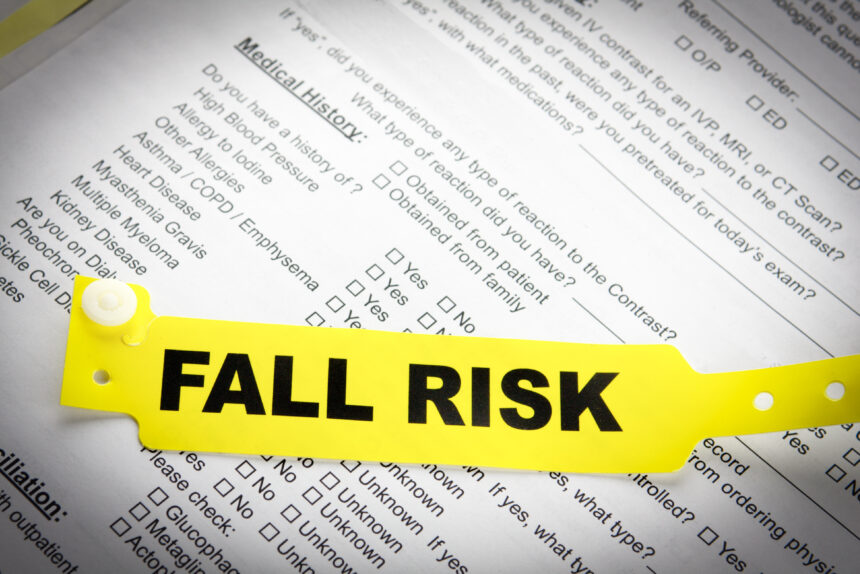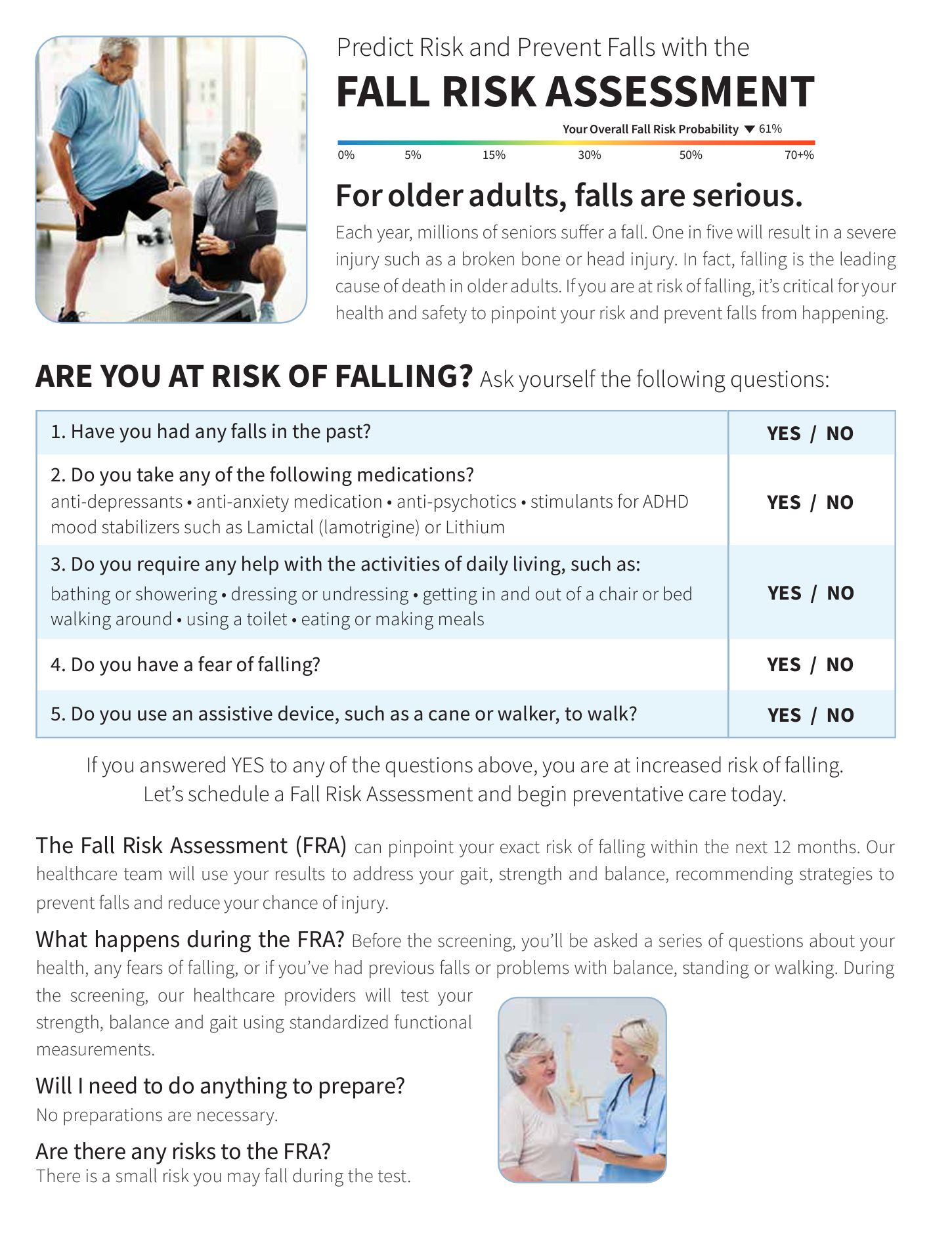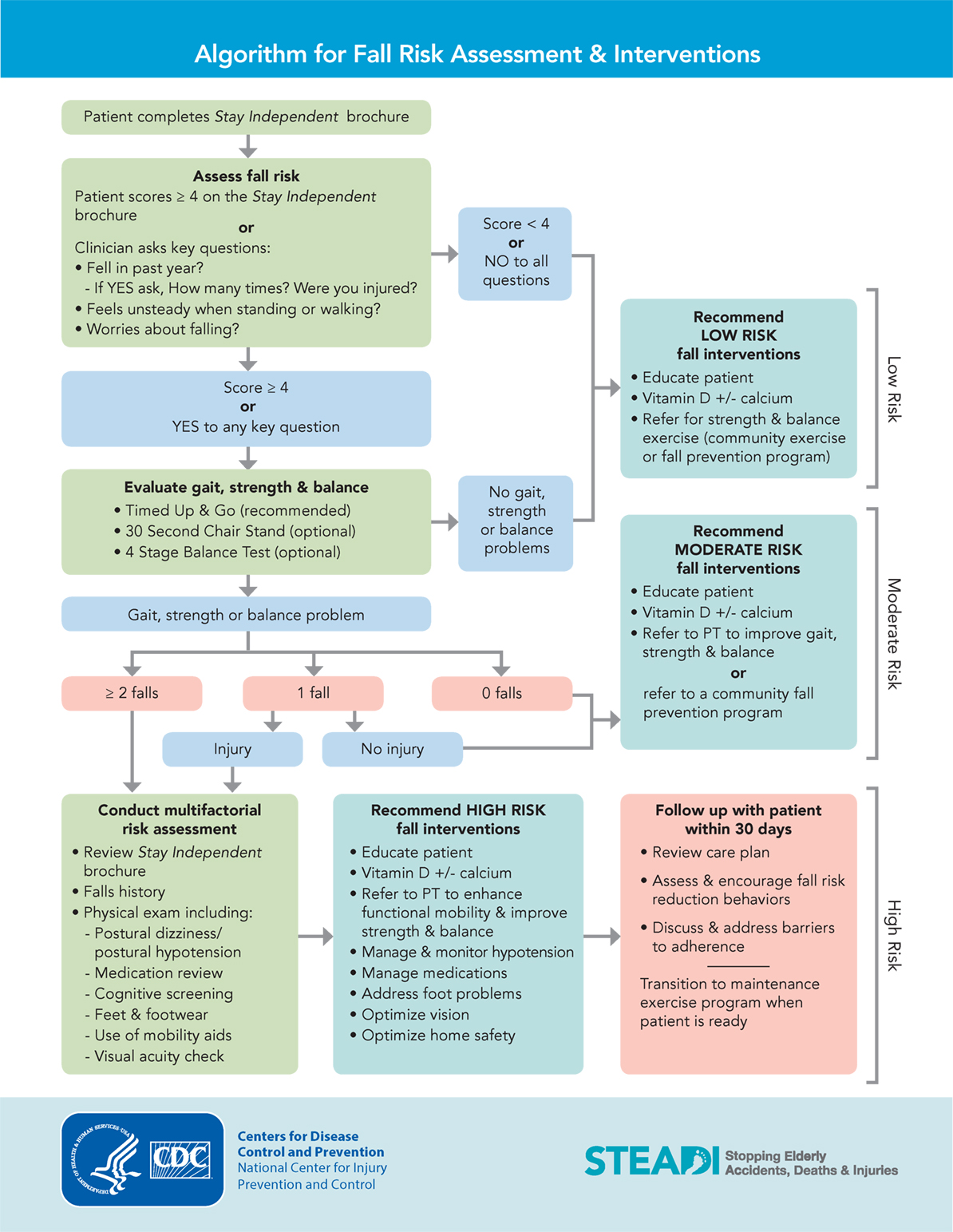See This Report on Dementia Fall Risk
Dementia Fall Risk Fundamentals Explained
Table of ContentsThe Basic Principles Of Dementia Fall Risk The smart Trick of Dementia Fall Risk That Nobody is Talking AboutHow Dementia Fall Risk can Save You Time, Stress, and Money.The Definitive Guide to Dementia Fall RiskSome Ideas on Dementia Fall Risk You Should Know
Make sure that there is an assigned area in your medical charting system where team can document/reference scores and document appropriate notes related to drop prevention. The Johns Hopkins Loss Danger Assessment Device is one of numerous devices your personnel can make use of to assist prevent damaging medical events.Individual falls in healthcare facilities are typical and debilitating adverse occasions that persist regardless of years of initiative to decrease them. Improving interaction across the examining registered nurse, treatment team, person, and individual's most included family and friends may strengthen fall prevention efforts. A team at Brigham and Female's Hospital in Boston, Massachusetts, looked for to develop a standardized loss prevention program that centered around boosted communication and client and household involvement.

The advancement group emphasized that successful execution depends upon individual and team buy-in, combination of the program right into existing workflows, and integrity to program processes. The team kept in mind that they are grappling with just how to guarantee connection in program execution during durations of crisis. During the COVID-19 pandemic, as an example, an increase in inpatient drops was related to constraints in individual interaction together with limitations on visitation.
The Ultimate Guide To Dementia Fall Risk
These occurrences are usually taken into consideration avoidable. To execute the intervention, companies require the following: Accessibility to Fall ideas sources Fall pointers training and re-training for nursing and non-nursing staff, including brand-new registered nurses Nursing workflows that permit patient and family engagement to carry out the falls assessment, guarantee use the prevention plan, and carry out patient-level audits.
The results can be highly detrimental, typically speeding up client decrease and creating longer hospital keeps. One research study estimated keeps boosted an additional 12 in-patient days after a patient fall. The Loss TIPS Program is based on engaging patients and their family/loved ones throughout 3 major procedures: evaluation, individualized preventative interventions, and auditing to guarantee that patients are participated in the three-step autumn avoidance procedure.
The client analysis is based upon the Morse Fall Range, which is a confirmed autumn risk analysis tool for in-patient medical facility setups. The range includes the 6 most typical reasons people in medical facilities drop: the client loss history, risky conditions (consisting of polypharmacy), usage of IVs and various other external gadgets, mental standing, gait, and flexibility.
Each danger variable links with several actionable evidence-based treatments. The nurse creates a plan that incorporates the treatments and is noticeable to the treatment team, client, and family on a laminated poster or printed aesthetic help. Nurses create the strategy while meeting the client and the client's family.
Our Dementia Fall Risk Statements
The poster acts as an interaction device with other participants of the patient's treatment team. Dementia Fall Risk. The audit component of the program consists of examining the patient's knowledge of their risk aspects and avoidance plan at the system and hospital degrees. Registered nurse champs perform at the very least 5 private interviews a month with clients and their families to check for understanding of the fall prevention plan

An approximated 30% of these falls outcome in injuries, which can vary in severity. Unlike various other adverse events that call for a standard medical reaction, autumn avoidance depends very on the demands of the patient. Consisting of the input of individuals that know the individual best permits greater modification. This strategy has proven to be extra efficient than fall avoidance programs that are based mainly on the manufacturing of a danger score and/or are not personalized.
Some Known Facts About Dementia Fall Risk.

Based on auditing outcomes, one site had 86% compliance and 2 sites had over 95% conformity. A cost-benefit analysis of the Fall TIPS program in 8 health centers approximated that the program cost $0.88 per individual to apply and resulted in cost savings linked here of $8,500 per 1000 patient-days in straight costs connected to the prevention of 567 falls over 3 years and 8 months.
According to the development team, companies curious about implementing the program ought to carry out a preparedness analysis and falls prevention spaces evaluation. 8 In addition, organizations ought to make sure the essential infrastructure and workflows for application and establish an execution plan. If one exists, the company's Fall Prevention Job Pressure need to be involved in planning.
Some Known Details About Dementia Fall Risk
To begin, organizations must ensure completion of training components by registered nurses and nursing aides - Dementia Fall Risk. Healthcare facility team ought to evaluate, based on the demands of a medical facility, whether to use a digital health and wellness record printout or paper variation of the autumn prevention strategy. Implementing teams need to recruit and train nurse champs and develop procedures for auditing and coverage on loss information
Team need to be associated with the process of redesigning the workflow to engage clients and family in the evaluation and prevention strategy procedure. Systems needs to be in area to ensure that devices can comprehend why a loss occurred and important site remediate the reason. Much more particularly, nurses need to have networks to give ongoing responses to both staff and system management so they can adjust and enhance loss prevention operations and connect systemic problems.